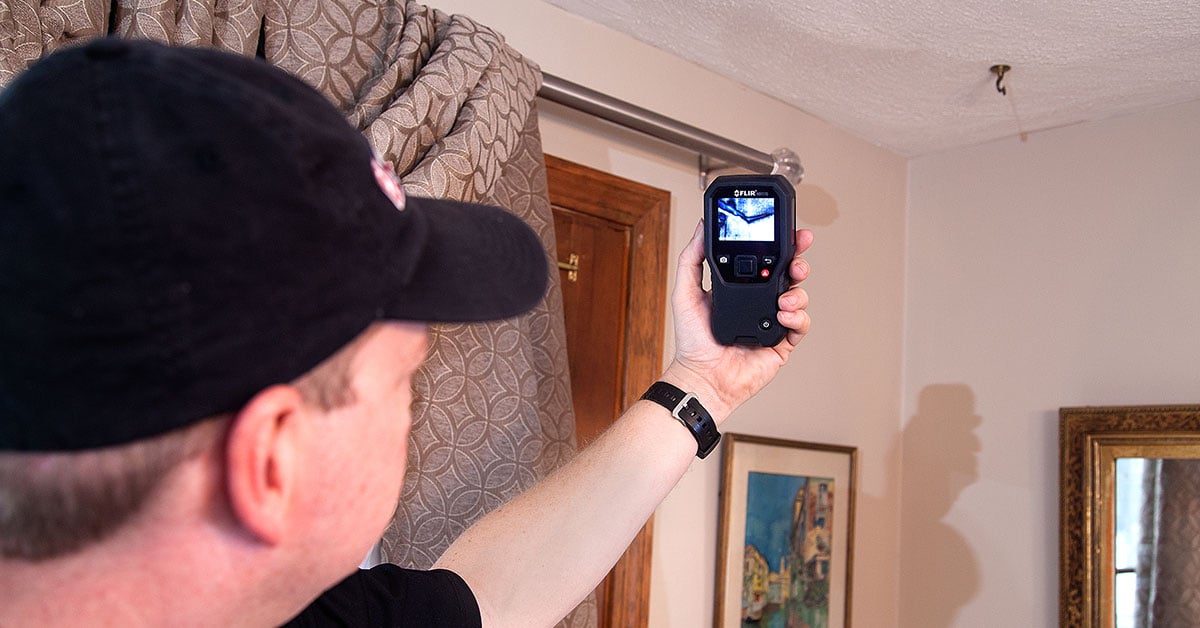Just how to Check If Your House Has a Hidden Leak
Just how to Check If Your House Has a Hidden Leak
Blog Article
This post which follows in relation to Detecting hidden plumbing leaks is truly enlightening. Read it for your own benefit and figure out what you think about it.

Early detection of dripping water lines can minimize a possible catastrophe. Some small water leaks might not be visible.
1. Take A Look At the Water Meter
Every home has a water meter. Inspecting it is a surefire way that aids you uncover leakages. For beginners, turn off all the water sources. Guarantee nobody will certainly purge, make use of the tap, shower, run the washing machine or dish washer. From there, most likely to the meter and watch if it will alter. Considering that nobody is using it, there should be no movements. That shows a fast-moving leakage if it relocates. If you detect no modifications, wait a hr or two and inspect back once more. This suggests you may have a slow-moving leak that might also be underground.
2. Inspect Water Intake
Analyze your water expenses as well as track your water usage. As the one paying it, you ought to notice if there are any kind of discrepancies. If you spot sudden changes, in spite of your usage being the same, it means that you have leakages in your plumbing system. Remember, your water expense should drop under the very same variety every month. An abrupt spike in your costs suggests a fast-moving leak.
A consistent increase every month, also with the same practices, reveals you have a sluggish leakage that's likewise slowly intensifying. Call a plumber to thoroughly inspect your home, specifically if you feel a cozy location on your flooring with piping below.
3. Do a Food Coloring Test
When it involves water usage, 30% comes from bathrooms. Test to see if they are running correctly. Drop flecks of food color in the tank and also wait 10 mins. There's a leakage between the storage tank and bowl if the color somehow infiltrates your bowl during that time without flushing.
4. Asses Outside Lines
Do not forget to check your exterior water lines also. Ought to water leak out of the link, you have a loosened rubber gasket. One tiny leakage can waste lots of water and spike your water bill.
5. Analyze the circumstance as well as inspect
Home owners should make it a habit to check under the sink counters and even inside cupboards for any type of bad odor or mold growth. These two warnings show a leakage so prompt interest is needed. Doing routine evaluations, also bi-annually, can conserve you from a significant trouble.
If you know your house is currently old, keep a careful eye on your heaters, hoses, pipes etc. Check for stainings and also compromising as a lot of devices as well as pipelines have a life expectancy. They will additionally normally degrade because of damage. Do not wait for it to rise if you believe leaking water lines in your plumbing system. Call a specialist plumber today so you don't end up with an awful mess in your home.
Early detection of leaking water lines can minimize a prospective disaster. Some small water leaks may not be visible. Checking it is a surefire way that helps you discover leaks. One tiny leak can squander lots of water as well as surge your water expense.
If you suspect dripping water lines in your plumbing system, don't wait for it to rise.
WARNING SIGNS OF WATER LEAKAGE BEHIND THE WALL
PERSISTENT MUSTY ODORS
As water slowly drips from a leaky pipe inside the wall, flooring and sheetrock stay damp and develop an odor similar to wet cardboard. It generates a musty smell that can help you find hidden leaks.
MOLD IN UNUSUAL AREAS
Mold usually grows in wet areas like kitchens, baths and laundry rooms. If you spot the stuff on walls or baseboards in other rooms of the house, it’s a good indicator of undetected water leaks.
STAINS THAT GROW
When mold thrives around a leaky pipe, it sometimes takes hold on the inside surface of the affected wall. A growing stain on otherwise clean sheetrock is often your sign of a hidden plumbing problem.
PEELING OR BUBBLING WALLPAPER / PAINT
This clue is easy to miss in rooms that don’t get much use. When you see wallpaper separating along seams or paint bubbling or flaking off the wall, blame sheetrock that stays wet because of an undetected leak.
BUCKLED CEILINGS AND STAINED FLOORS
If ceilings or floors in bathrooms, kitchens or laundry areas develop structural problems, don’t rule out constant damp inside the walls. Wet sheetrock can affect adjacent framing, flooring and ceilings.
https://www.servicemasterbyzaba.com/blog/how-to-detect-water-leakage-in-walls/

Hopefully you enjoyed reading our article on Finding hidden leaks. Thanks for spending some time to read through our piece of content. Are you aware of anybody else who is interested in the niche? Take a moment to promote it. Many thanks for going through it.
Report this page